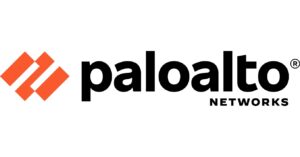By: Doug Purcell | Palo Alto Networks
Date: Friday, July 23, 2021
Ever since I joined the company, I’ve been exposed to several opportunities to volunteer for Inclusion and Diversity (I&D) efforts which is something that’s dear to my heart. One of the earliest opportunities was Activities in Cybersecurity Education for Students (A.C.E.S.), which is dedicated to demystifying cybersecurity through interactive learning, equipping youth with resources to have safer online experiences, and encouraging them to pursue careers in cybersecurity.
Initiatives like A.C.E.S. are opportunities for corporations to have positive impacts on underrepresented communities by creating a rich pipeline of talent. Through developing a slide deck to help the company pivot to online deliveries of A.C.E.S., I was recruited to speak to students in The Hidden Genius Project on June 18, 2021; a nonprofit based in Oakland, CA, with the goal of training and mentoring Black male youth in technology, entrepreneurship, and leadership. They were hosting virtual business trios (via Zoom) with tech companies across the Bay Area, and Palo Alto Networks was one of the companies they selected. When I got the invitation to participate in the talk, my response was emphatic, “I’ll be happy to do this!”
Before I joined Palo Alto Networks, I did tech talks and technical training across various cities in California, including San Diego, Los Angeles, Riverside, Sunnyvale, San Francisco, Berkeley, Oakland, and Sacramento, so at this point in my career, I was used to presenting to a room full of people. However, I was concerned about having my message resonate with the students. I believe that in order to get your message across, you have to first captivate and then retain the attention of your audience. This is especially true for teenagers who can have wandering minds. Therefore, after I pondered how I was going to deliver my presentation, I decided to ditch the PowerPoint and speak from the heart with the goal of trying to inspire the students to pursue careers in tech. In addition, I wanted to give the students the opportunity to express their thoughts. I knew listening to them would make the talk more engaging than just lecturing them.
When the big day came, the volunteers met briefly to understand how the event would be facilitated and get any last-minute questions answered. After the pre-meet was over, the students were put into breakout rooms with the volunteers, who each gave a presentation discussing their education, role, and path to Palo Alto Networks. Each session lasted roughly 15-minutes, and then the volunteers rotated to a new set of students until they had the opportunity to speak to all of them. The event went by fast, and each session started the same: After I gave the spiel about myself and my career, I asked the students what projects they were working on in The Hidden Genius Project, which got them to open up. One of the students mentioned that he was trying to build an AI voice recognition tool and was also interested in pursuing a career in tech.
I gave advice when I felt it was warranted. For example, I asked the student who expressed an interest in AI if he considered using Amazon Web Services (AWS), as they have a plethora of services geared towards artificial intelligence. In addition, Ashely Savageau, who is the social impact program manager at PANW, has connected that student to two researchers at Palo Alto Networks for an informational interview. This is just one example of how our company goes beyond day one. I concluded each session with a motivational message to the students which is, “Don’t be afraid to let the world know who you are and to go after your dreams.”
After the volunteers talked with all the students, I facilitated the recap and asked the students if they had any additional questions. One of the students asked if cybersecurity has changed since the beginning of the COVID-19 pandemic. We all agreed that it has, as cybersecurity is a dynamic field that requires constant innovation to stay ahead of the latest threats.
Conclusion
I was happy to have the opportunity to represent Palo Alto Networks at this event, and I feel that it could serve as inspiration for similar corporate community engagement events. Tech is an industry that recognizes the need for I&D efforts, and Palo Alto Networks is a company that’s working to minimize this gap. I don’t mind volunteering for causes that I champion because I’m a firm believer that in order to make a change, you have to step up to the plate. Plus, employees can log their volunteer hours in My SMILE, and the company will contribute to the nonprofit employees volunteer with. I want to conclude this article by giving a shout-out to the volunteers: Rolanda Small, Derek Jones, Juwan Rogers, and MK Palmore for helping to make this event pop. There’s a lot of work to be done, and I hope to see more events like these in the future!


